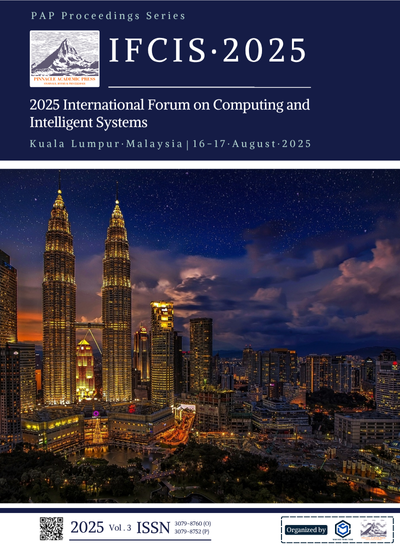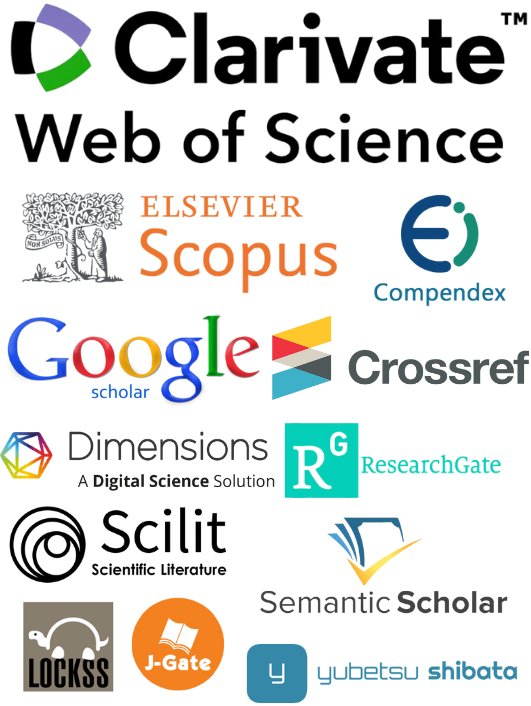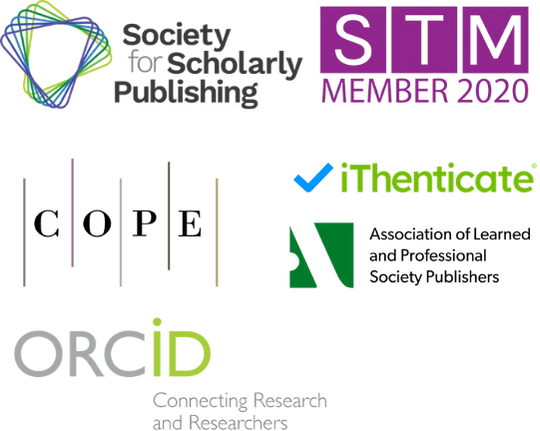AI-Driven Quality Assessment and Investment Risk Identification for Carbon Credit Projects in Developing Countries
Keywords:
carbon credit assessment, artificial intelligence, investment risk, developing countriesAbstract
The rapid expansion of carbon credit markets in developing countries presents significant opportunities alongside substantial investment risks. Traditional assessment methodologies struggle with the complexity and heterogeneity of project data, creating barriers to effective capital allocation. This research develops an artificial intelligence-driven framework for comprehensive quality assessment and risk identification in carbon credit projects across developing nations. The proposed methodology integrates multi-dimensional feature engineering with advanced deep learning algorithms to automate project evaluation processes. Through analysis of 2,847 carbon projects across Southeast Asia, Latin America, and Sub-Saharan Africa, the framework demonstrates superior performance compared to conventional assessment approaches. The AI-driven system achieves 94.3% accuracy in quality classification and reduces assessment time by 78%. Implementation results indicate significant potential for improving investment decision-making while supporting sustainable development objectives in emerging markets.
References
1. L. Zhu, H. Yang, and Z. Yan, "Extracting temporal information from online health communities," in Proc. 2nd Int. Conf. Crowd Sci. Eng., Jul. 2017, pp. 50–55, doi: 10.1145/3126973.3126975.
2. Y. Chen, C. Ni, and H. Wang, "AdaptiveGenBackend: A scalable architecture for low-latency generative AI video processing in content creation platforms," Ann. Appl. Sci., vol. 5, no. 1, 2024.
3. M. Zhang, S. Baral, N. Heffernan, and A. Lan, "Automatic short math answer grading via in-context meta-learning," arXiv preprint arXiv:2205.15219, 2022.
4. K. Mo, W. Liu, F. Shen, X. Xu, L. Xu, X. Su, and Y. Zhang, "Precision kinematic path optimization for high-DOF robotic ma-nipulators utilizing advanced natural language processing models," in 2024 5th Int. Conf. Electron. Commun. Artif. Intell. (ICECAI), May 2024, pp. 649–654, doi: 10.1109/ICECAI62591.2024.10675146.
5. S. Wu, Y. Li, M. Wang, D. Zhang, Y. Zhou, and Z. Wu, "More is better: Enhancing open-domain dialogue generation via mul-ti-source heterogeneous knowledge," in Proc. 2021 Conf. Empirical Methods Nat. Lang. Process., Nov. 2021, pp. 2286–2300, doi: 10.18653/v1/2021.emnlp-main.175.
6. K. Yu, Y. Chen, T. K. Trinh, and W. Bi, "Real-time detection of anomalous trading patterns in financial markets using generative adversarial networks," 2025, doi: 10.20944/preprints202504.1591.v1.
7. G. Rao, T. K. Trinh, Y. Chen, M. Shu, and S. Zheng, "Jump prediction in systemically important financial institutions' CDS prices," Spectrum Res., vol. 4, no. 2, 2024.
8. H. Wang, K. Qian, C. Ni, and J. Wu, "Distributed batch processing architecture for cross-platform abuse detection at scale," Pinnacle Acad. Press Proc. Ser., vol. 2, pp. 12–27, 2025.
9. C. Ju and T. K. Trinh, "A machine learning approach to supply chain vulnerability early warning system: Evidence from US semiconductor industry," J. Adv. Comput. Syst., vol. 3, no. 11, pp. 21–35, 2023, doi: 10.69987/JACS.2023.31103.
10. C. Jiang, H. Wang, and K. Qian, "AI-enhanced cultural resonance framework for player experience optimization in AAA games localization," Pinnacle Acad. Press Proc. Ser., vol. 2, pp. 75–87, 2025.
11. B. Dong and T. K. Trinh, "Real-time early warning of trading behavior anomalies in financial markets: An AI-driven approach," J. Econ. Theory Bus. Manag., vol. 2, no. 2, pp. 14–23, 2025, doi: 10.70393/6a6574626d.323838.
12. L. Yan, Y. Wang, L. Guo, and K. Qian, "Enhanced spatio-temporal attention mechanism for video anomaly event detection," 2025, doi: 10.20944/preprints202504.1623.v1.
13. Z. Wang, X. Wang, and H. Wang, "Temporal graph neural networks for money laundering detection in cross-border transac-tions," Acad. Nexus J., vol. 3, no. 2, 2024.
14. J. Wang, L. Guo, and K. Qian, "LSTM-based heart rate dynamics prediction during aerobic exercise for elderly adults," 2025. , doi: 10.20944/preprints202504.1692.v1.
15. T. K. Trinh and Z. Wang, "Dynamic graph neural networks for multi-level financial fraud detection: A temporal-structural approach," Ann. Appl. Sci., vol. 5, no. 1, 2024.
16. D. Chowdhury and P. Kulkarni, "Application of data analytics in risk management of fintech companies," in 2023 Int. Conf. Innov. Data Commun. Technol. Appl. (ICIDCA), Mar. 2023, pp. 384–389, doi: 10.1109/ICIDCA56705.2023.10099795.
17. T. K. Trinh and D. Zhang, "Algorithmic fairness in financial decision-making: Detection and mitigation of bias in credit scoring applications," J. Adv. Comput. Syst., vol. 4, no. 2, pp. 36–49, 2024, doi: 10.69987/JACS.2024.40204.
18. A. A. H. Raji, A. H. F. Alabdoon, and A. Almagtome, "AI in credit scoring and risk assessment: Enhancing lending practices and financial inclusion," in 2024 Int. Conf. Knowl. Eng. Commun. Syst. (ICKECS), vol. 1, Apr. 2024, pp. 1–7, doi: 10.1109/ICKECS61492.2024.10616493.
19. J. Wu, H. Wang, K. Qian, and E. Feng, "Optimizing latency-sensitive AI applications through edge-cloud collaboration," J. Adv. Comput. Syst., vol. 3, no. 3, pp. 19–33, 2023, doi: 10.69987/JACS.2023.30303.
20. J. Y. Shih and Z. H. Chin, "A fairness approach to mitigating racial bias of credit scoring models by decision tree and the re-weighing fairness algorithm," in 2023 IEEE 3rd Int. Conf. Electron. Commun., Internet Things Big Data (ICEIB), Apr. 2023, pp. 100–105, doi: 10.1109/ICEIB57887.2023.10170339.
21. C. Zhu, J. Xin, and T. K. Trinh, "Data quality challenges and governance frameworks for AI implementation in supply chain management," Pinnacle Acad. Press Proc. Ser., vol. 2, pp. 28–43, 2025.
22. C. Ni, K. Qian, J. Wu, and H. Wang, "Contrastive time-series visualization techniques for enhancing AI model interpretability in financial risk assessment," 2025, doi: 10.20944/preprints202504.1984.v1.
23. T. K. Trinh, G. Jia, C. Cheng, and C. Ni, "Behavioral responses to AI financial advisors: Trust dynamics and decision quality among retail investors," Appl. Comput. Eng., vol. 144, pp. 69–79, 2025. ISBN: 9781805900214.
24. Y. Li, X. Jiang, and Y. Wang, "TRAM-FIN: A transformer-based real-time assessment model for financial risk detection in multinational corporate statements," J. Adv. Comput. Syst., vol. 3, no. 9, pp. 54–67, 2023, doi: 10.69987/JACS.2023.30905.
25. C. Zhu, J. Xin, and D. Zhang, "A deep reinforcement learning approach to dynamic e-commerce pricing under supply chain disruption risk," Ann. Appl. Sci., vol. 5, no. 1, 2024.
26. C. Zhu, C. Cheng, and S. Meng, "DRL PricePro: A deep reinforcement learning framework for personalized dynamic pricing in e-commerce platforms with supply constraints," Spectrum Res., vol. 4, no. 1, 2024.
27. D. Zhang and X. Jiang, "AI-enabled product authentication and traceability in global supply chains," J. Adv. Comput. Syst., vol. 3, no. 6, pp. 12–26, 2023, doi: 10.69987/JACS.2023.30602.
28. Z. Zhang and Z. Wu, "Context-aware feature selection for user behavior analytics in zero-trust environments," J. Adv. Comput. Syst., vol. 3, no. 5, pp. 21–33, 2023, doi: 10.69987/JACS.2023.30503.
29. M. Sun, Z. Feng, and P. Li, "Real-time AI-driven attribution modeling for dynamic budget allocation in US e-commerce: A small appliance sector analysis," J. Adv. Comput. Syst., vol. 3, no. 9, pp. 39–53, 2023, doi: 10.69987/JACS.2023.30904.
30. S. Zhang, C. Zhu, and J. Xin, "CloudScale: A lightweight AI framework for predictive supply chain risk management in small and medium manufacturing enterprises," Spectrum Res., vol. 4, no. 2, 2024.
31. S. Zhang, T. Mo, and Z. Zhang, "LightPersML: A lightweight machine learning pipeline architecture for real-time personaliza-tion in resource-constrained e-commerce businesses," J. Adv. Comput. Syst., vol. 4, no. 8, pp. 44–56, 2024, doi: 10.69987/JACS.2024.40807.
32. M. Li, W. Liu, and C. Chen, "Adaptive financial literacy enhancement through cloud-based AI content delivery: Effectiveness and engagement metrics," Ann. Appl. Sci., vol. 5, no. 1, 2024.
33. J. Chen and Z. Lv, "Graph neural networks for critical path prediction and optimization in high-performance ASIC design: A ML-driven physical implementation approach," in Glob. Conf. Adv. Sci. Technol., vol. 1, no. 1, Apr. 2025, pp. 23–30.
34. S. Zhang, Z. Feng, and B. Dong, "LAMDA: Low-latency anomaly detection architecture for real-time cross-market financial decision support," Acad. Nexus J., vol. 3, no. 2, 2024.
35. A. Kang, J. Xin, and X. Ma, "Anomalous cross-border capital flow patterns and their implications for national economic security: An empirical analysis," J. Adv. Comput. Syst., vol. 4, no. 5, pp. 42–54, 2024, doi: 10.69987/JACS.2024.40504.
36. H. Wang, J. Wu, C. Ni, and K. Qian, "Automated compliance monitoring: A machine learning approach for digital services act adherence in multi-product platforms," Appl. Comput. Eng., vol. 147, pp. 14–25, 2025. ISBN: 9781805900559.
37. Z. Wang, T. K. Trinh, W. Liu, and C. Zhu, "Temporal evolution of sentiment in earnings calls and its relationship with financial performance," Appl. Comput. Eng., vol. 141, pp. 195–206, 2025. ISBN: 9781835589977.
38. Y. Zhao, P. Zhang, Y. Pu, H. Lei, and X. Zheng, "Unit operation combination and flow distribution scheme of water pump station system based on genetic algorithm," Appl. Sci., vol. 13, no. 21, p. 11869, 2023, doi: 10.3390/app132111869.
39. G. Rao, Z. Wang, and J. Liang, "Reinforcement learning for pattern recognition in cross-border financial transaction anomalies: A behavioral economics approach to AML," Appl. Comput. Eng., vol. 142, pp. 116–127, 2025. ISBN: 9781835589991.
40. J. Liang, J. Fan, Z. Feng, and J. Xin, "Anomaly detection in tax filing documents using natural language processing techniques," Appl. Comput. Eng., vol. 144, pp. 80–89, 2025. ISBN: 9781805900214.
41. C. Ju and G. Rao, "Analyzing foreign investment patterns in the US semiconductor value chain using AI-enabled analytics: A framework for economic security," Pinnacle Acad. Press Proc. Ser., vol. 2, pp. 60–74, 2025.
42. C. Ni, J. Wu, and H. Wang, "Energy-aware edge computing optimization for real-time anomaly detection in IoT networks," Appl. Comput. Eng., vol. 139, pp. 42–53, 2025. ISBN: 9781805900252.
43. J. Wu, C. Ni, H. Wang, and J. Chen, "Graph neural networks for efficient clock tree synthesis optimization in complex SoC designs," Appl. Comput. Eng., vol. 150, pp. 101–111, 2025. ISBN: 9781805900634.
44. H. McNichols, M. Zhang, and A. Lan, "Algebra error classification with large language models," in Int. Conf. Artif. Intell. Educ., Jun. 2023, pp. 365–376. ISBN: 9783031362712.
45. M. Zhang, N. Heffernan, and A. Lan, "Modeling and analyzing scorer preferences in short-answer math questions," arXiv preprint arXiv:2306.00791, 2023.
46. J. Fan, T. K. Trinh, and H. Zhang, "Deep learning-based transfer pricing anomaly detection and risk alert system for pharma-ceutical companies: A data security-oriented approach," J. Adv. Comput. Syst., vol. 4, no. 2, pp. 1–14, 2024, doi: 10.69987/JACS.2024.40201.
47. Z. Wang, M. Zhang, R. G. Baraniuk, and A. S. Lan, "Scientific formula retrieval via tree embeddings," in 2021 IEEE Int. Conf. Big Data (Big Data), Dec. 2021, pp. 1493–1503, doi: 10.1109/BigData52589.2021.9671942.
48. M. Zhang, Z. Wang, R. Baraniuk, and A. Lan, "Math operation embeddings for open-ended solution analysis and feedback," arXiv preprint arXiv:2104.12047, 2021.
49. D. Qi, J. Arfin, M. Zhang, T. Mathew, R. Pless, and B. Juba, "Anomaly explanation using metadata," in 2018 IEEE Winter Conf. Appl. Comput. Vis. (WACV), Mar. 2018, pp. 1916–1924, doi: 10.1109/WACV.2018.00212.
50. M. Zhang, T. Mathew, and B. Juba, "An improved algorithm for learning to perform exception-tolerant abduction," in Proc. AAAI Conf. Artif. Intell., Feb. 2017, vol. 31, no. 1, doi: 10.1609/aaai.v31i1.10700.
51. S. Yan, "Design of obstacle avoidance system for the blind based on fuzzy control," Netinfo Security, 2014.
52. K. Mo, W. Liu, X. Xu, C. Yu, Y. Zou, and F. Xia, "Fine-tuning gemma-7b for enhanced sentiment analysis of financial news headlines," in 2024 IEEE 4th Int. Conf. Electron. Technol., Commun. Inf. (ICETCI), May 2024, pp. 130–135, doi: 10.1109/ICETCI61221.2024.10594605.
53. S. Wu, M. Wang, Y. Li, D. Zhang, and Z. Wu, "Improving the applicability of knowledge-enhanced dialogue generation systems by using heterogeneous knowledge from multiple sources," in Proc. 15th ACM Int. Conf. Web Search Data Min., Feb. 2022, pp. 1149–1157, doi: 10.1145/3488560.3498393.
54. S. Wu, M. Wang, D. Zhang, Y. Zhou, Y. Li, and Z. Wu, "Knowledge-aware dialogue generation via hierarchical infobox ac-cessing and infobox-dialogue interaction graph network," in IJCAI, Aug. 2021, pp. 3964–3970.
55. M. Wang, P. Xue, Y. Li, and Z. Wu, "Distilling the documents for relation extraction by topic segmentation," in Document Anal. Recognit.–ICDAR 2021: 16th Int. Conf., Sep. 2021, pp. 517–531. ISBN: 9783030865481.
56. M. R. Eatherton et al., "Considering ductility in the design of bare deck and concrete on metal deck diaphragms," in 17th World Conf. Earthquake Eng., Sendai, Japan.
57. G. Wei, I. Koutromanos, T. M. Murray, and M. R. Eatherton, "Investigating partial tension field action in gable frame panel zones," J. Constr. Steel Res., vol. 162, p. 105746, 2019, doi: 10.1016/j.jcsr.2019.105746.
58. G. Wei, I. Koutromanos, T. M. Murray, and M. R. Eatherton, "Computational study of tension field action in gable frame panel zones," 2018.
59. H. Foroughi, G. Wei, S. Torabian, M. R. Eatherton, and B. W. Schafer, "Seismic demands on steel diaphragms for 3D archetype buildings with concentric braced frames".
60. G. Wei, B. Schafer, M. Seek, and M. Eatherton, "Lateral bracing of beams provided by standing seam roof system: Concepts and case study," 2020.
61. H. Foroughi, G. Wei, S. Torabian, M. R. Eatherton, and B. W. Schafer, "Seismic response predictions from 3D steel braced frame building simulations".
62. G. Wei, H. Foroughi, S. Torabian, M. R. Eatherton, and B. W. Schafer, "Seismic design of diaphragms for steel buildings con-sidering diaphragm inelasticity," J. Struct. Eng., vol. 149, no. 7, p. 04023077, 2023, doi: 10.1061/JSENDH.STENG-11832.
63. L. Zhu, H. Yang, and Z. Yan, "Mining medical related temporal information from patients' self-description," Int. J. Crowd Sci., vol. 1, no. 2, pp. 110–120, 2017, doi: 10.1108/IJCS-08-2017-0018.
64. G. Wei, X. Wang, and Z. Chu, "Fine-grained action analysis for automated skill assessment and feedback in instructional vid-eos," Pinnacle Acad. Press Proc. Ser., vol. 2, pp. 96–107, 2025.
65. D. Zhang and X. Jiang, "Cognitive collaboration: Understanding human-AI complementarity in supply chain decision pro-cesses," Spectrum Res., vol. 4, no. 1, 2024.
66. Z. Zhang and L. Zhu, "Intelligent detection and defense against adversarial content evasion: A multi-dimensional feature fu-sion approach for security compliance," Spectrum Res., vol. 4, no. 1, 2024.
Downloads
Published
Issue
Section
License
Copyright (c) 2025 Daiyang Zhang, Yumeng Wang (Author)

This work is licensed under a Creative Commons Attribution 4.0 International License.



